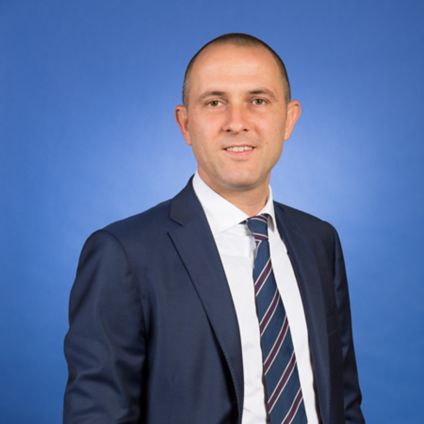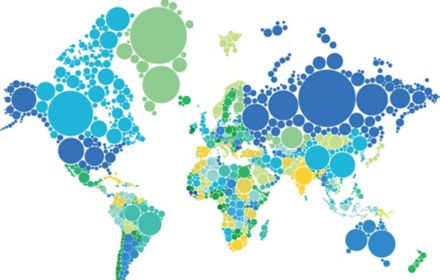KPMG Private Enterprise was the exclusive platinum sponsor of the 2nd annual STEP Project Global Consortium (SPGC) Family Business Summit “The pathway to good — Sustaining family business legacy for wellbeing”.
The Summit was a unique gathering of family business scholars and practitioners, leading family business owners and their next-generation family members. Hosted by SPGC, a leading global family business research initiative with an international reputation, the Summit provided a platform for exchanging research insights, ideas, and perspectives on leading a successful family business and building a lasting legacy.
A series of insightful keynotes, workshops, panels and discussions explored core family business topics, such as succession, family governance, innovation, sustainability, internationalization, financing and conflict management, for gaining a deep understanding of family business dynamics and promoting their wellbeing and sustainability.
KPMG Private Enterprise professionals are proud to share their perspectives on these and related topics throughout the Summit with key insights from family businesses in a wide range of industries globally.
Visit global-summit-amalfi-coast-2024 - The Step Project Global Consortium (spgcfb.org) to find out more about the Summit.
Key takeaways from the Summit
“Developing next-generation leaders” – Next/Now Gen workshop
Developing next-generation leaders is a key consideration for family businesses, and it’s critical to ensure that the process preserves the family legacy while also fostering transgenerational entrepreneurship.
Using the KPMG Private Enterprise Sages family business story, participants in the Next-Now Gen Academy explored best practices, potential pitfalls and personal experiences in helping next-generation families set themselves up for success.
Key takeaways from the session
- The concept of a business family having two CEOs was explored: a Chief Executive Office and a Chief Emotional Officer whose role would be to manage family emotions when decisions need to be made for the business family.
- Preserving a personal connection to the family legacy is important to ensure that the family’s entrepreneurial spirit is maintained and the values and traditions that are important to preserve continue to be passed on to future generations.
- It is important for the family to encourage a mindset of continuous improvement, risk-taking, and adaptability by promoting a culture where new ideas are welcomed, explored, and supported by the family.
- Succession planning needs to move beyond discussions to a well-developed process of formal succession planning that factors in areas of expertise or functional knowledge that next-generation family members require for contributing effectively to the business's success. It includes ensuring that all family members working in the business are up-to-date with industry trends, market developments and emerging technologies.
- Beyond business and industry knowledge, the succession plan also needs to address the need to pass on and build relationships and trust with key stakeholders, including family members, employees and external business partners.
Chaired by

Creagh Sudding
Director, Family Business, KPMG Private Enterprise, KPMG in South Africa
“Insights from the coalface” – PhD and Junior Academic Faculty Master Class
An overview of emerging trends in family businesses was presented to family business scholars, considering some of the actions family businesses were implementing to engage the trends. The discussion with the family business scholars included the practical learnings to enhance the research which is imperative for family businesses and their trusted advisors.
Key takeaways from the session
- Upcoming generations and consumers are increasingly demanding that family businesses operate in a sustainable and ethical manner.
- Some of the actions being considered by family businesses are to develop a formal sustainability strategy which is underpinned by a formalized governance practices and the roles that family members can play. Engaging with key stakeholders— including employees, customers, suppliers and the community — and trusted advisors enables the family business to understand what they consider to be best practice.
- As family businesses grow, they also become more complex, there is a need to diversify their wealth and investments with a shift in focus from purely financial diversification to incorporating social and human capital as well.
- One important action being considered by family businesses are to understand the additional roles that may be required to manage the family’s assets and wealth in a more efficient and effective manner, such as family office.
- Changing demographics - an aging population and the rise of the next generation’s focus on inclusion and diversity is having an impact on succession planning in family businesses and leading to adapting succession models.
- The succession planning process now requires the family to consider new leadership models, such as co-leadership or a non-family CEO – both of which may be good options for families with multiple qualified successors, or none who are qualified or interested.
- Embracing technology (and AI) is no longer an option - it is now a requirement to ensure the sustainability of the business and ensure that upcoming generations are engaged.
- One important action being considered is to identify a next leader who embraces technology and AI as an enabler for transformation and growth.
- To enhance the field of research, the discussion centered around:
- Understanding critical junctures in family business life cycles, and the research may consider the challenges family businesses may be vulnerable to and identifying models to navigate the family through such junctures.
- The importance of focusing on relevant and practical research grounded in real-world problems for the family business community and to identify practical solutions.
- Collaboration with researchers and advisors from other fields to bring new perspectives and insights to family business research.
- Building relationships with family business members will support researchers’ need to have a real-world impact, understanding the challenges family businesses face and develop actionable research.
- It is important for researchers to communicate findings to the family business community in a way that is clear, concise and actionable, including presentations and workshops.
Chaired by

Global Leader, KPMG Private Enterprise Family Business, KPMG International, and
Partner in Charge, Family Business and Private Clients, KPMG Australia

Director, Family Business, KPMG Private Enterprise, KPMG in South Africa
“Voices of Harmony: The Quest for Global Wellbeing”
Two distinguished keynote speakers described the profound work and vision of their foundation in empowering people and communities worldwide. In particular, they focused on the intricate relationship between individual well-being, flourishing societies, and the important role that family businesses play.
Key takeaways from the session
- ESG requirements are important for the world and necessary for every economy. However, they should not be the driver of the philanthropic strategies of family businesses. The driver should be the passion for whatever the philanthropic activities are that they are undertaking.
- When family businesses are considering their philanthropic activities, the focus should be on “wealth beyond profits” and the ways in which family business define their success from both a financial and social point of view.
- By contributing to the world with a sense of meaning and purpose, the reference to “charitable organizations” is evolving in family businesses. As they become purpose-led, for-profit enterprises, they need to ensure they are putting self-sustainable structures in place to manage and govern the family’s philanthropic activities as they become “sustainable investors” as well as “sustainable operators”.
- Transparency is important and measuring and reporting the impact of their activities is important. Working in partnership with other philanthropic entities can often be the key to success, where each entity focuses on their core activities, but their combined impact is much greater.
Moderated by

Matteo Balestracci
Partner, KPMG in Italy
“Beyond bloodlines: Embracing non-family CEOs in family businesses”
A dynamic discussion between an accomplished family business owner and a non-family CEO probed the pivotal moments that signal the need for external leadership. A highlight was their recommendations for ensuring there is a synergistic match between an external executive and the family, and strategies to overcome potential challenges.
Key takeaways from the session
- How to recognize when it’s time to consider a non-family CEO: When the business is growing at a fast pace and requires professional management with experience beyond what the family may already have.
- Founders or current family CEOs need to recognize when it’s the right time to step aside and bring a non-family CEO into the business. But they also need something else that they’re passionate about and a new chapter they’re anxious to pursue.
- Managing family dynamics is one of the most common challenges that non-family CEOs have to to overcome. While it’s generally easier for them to resolve business problems because it’s part of their skillset, family dynamics often come into play once those problems have been resolved.
- Having family members spend time with the non-family CEO beyond the figures and without an agenda helps to open up communications with family members who want to know about the business and for non-family CEOs to share some of their perspectives as well.
- A good Board to support the non-family CEO is incredibly important, as is the opportunity to work with a non-family advisory board with the right governance in place to ensure the non-family CEO is able to move forward without interference from family members.
- Sometimes, it’s necessary to reignite the family’s passion for the business, and non-family CEOs need to be open to giving next-generation family members the opportunity to participate in certain aspects of the business.
- Part of the non-family CEO’s succession planning process may also include preparing non-family employees for senior-level roles in the business.
Moderated by

Camilla Cullinane
Partner and EMA Head of Family Business, KPMG in Ireland
“Unlocking legacy – The path to superior growth in family businesses”
A preview of the insights from the latest Global Family Business survey and report — a collaboration between the STEP Project Global Consortium and KPMG Private Enterprise — explored the delicate balance between tradition and innovation in family businesses and how they can apply the "legacy matrix" to sustain their growth. The discussion provided a roadmap for family businesses to leverage their past by building a resilient and forward-looking legacy and for academia to advance their understanding of the impact of family business legacies.

Unlocking legacy — The path to superior growth in family businesses
Balancing tradition and change for enduring success
Download the report (2.8 MB) ⤓
Key takeaways from the session
- The family’s legacy is a high-value asset that contributes to superior business and sustainability performance.
- Legacies are important for connecting the past, present and future in making strategic decisions.
- Strong legacies contribute to socioemotional wealth and transgenerational entrepreneurship.
- It’s important to recognize the “legacy paradox” — that legacies may become liabilities if they are too entrenched in tradition and stand in the way of innovation.
Key insights from the report
- Five legacy components
Four legacy components (material, biological, social, and identity legacies) were examined in a survey of 2,683 family business leaders from 80 countries and territories. Entrepreneurial legacies were added as an important fifth component in the report based on follow-up discussions with family business leaders. All five components have an impact on family business performance. - The legacy paradox
While tradition has historically been a key contributor to a business family’s legacy, what happens to that legacy when tradition stands in the way of innovation? This is the legacy paradox - when a highly valued asset has the potential to become a future liability. In today’s fast-changing environment, finding ways for tradition and innovation to co-exist is one of the most common challenges facing family businesses. - The essence of legacy
Family businesses that reported strong legacy scores also reported high business performance and sustainability results, which were enabled by high levels of entrepreneurialism across several generations.
The highest-performing businesses also tend to have the strongest legacy scores, which suggests there is a compelling link between the depth of the legacy of a family business, its financial performance and the strength of its sustainability practices. This reinforces the view that legacies cannot be viewed through a lens of the past, but as essential ingredients for future-oriented, long-term growth and value. - Building generational bridges
Generational differences can enrich family business legacies by contributing diverse views, experiences and approaches to the future of the business.
However, these differences may also manifest themselves in potential generational conflicts, which highlights the need to build bridges between the generations so that many different aspects of the entire legacy can be fulfilled. Building these bridges is also important for sustaining entrepreneurial momentum in the business during periods of ownership and leadership transitions. - Introduction of the legacy matrix
Along with the survey results, a new legacy matrix was introduced in the report — the outcome of extensive STEP Project Global Consortium research — which identifies four legacy types based on their legacy and transgenerational entrepreneurship scores: Static, Preservative, Evolving and Dynamic. - What we learned
- Legacy is about preserving tradition while embracing change
- Legacy honors heritage while fostering innovation
- Legacy can help to ensure continuity while charting new paths forward
Applying the legacy matrix in real time
During the session, Summit participants had the opportunity to apply the legacy matrix tool to their family businesses and identify themselves in one of four legacy types: Static, Preservative, Evolving and Dynamic. The majority – 46 percent – consider their family business legacy to be in the “Dynamic” category, which suggests they have both high transgenerational entrepreneurship and legacy scores. By comparison, the Dynamic Legacy type was represented by 34 percent of the family businesses that contributed to the survey.
Using the legacy matrix in your family
The legacy matrix is designed to help family businesses reflect on their current legacy and understand where it may lead them in the future.
Applying the legacy matrix tool to your family business may be an important first step in assessing the strength of your legacy, the impact it may have on the performance of your business. There is a distinct benefit in having multiple family members answering the questions in the matrix tool and comparing their outcomes to stimulate informed conversations about how to improve your legacy outcome in areas that may require development or improvement. Take the assessment.
Chaired by

Global Leader, KPMG Private Enterprise Family Business, KPMG International, and
Partner in Charge, Family Business and Private Clients, KPMG Australia

STEP Project Global Consortium, Academic Director, Director, IPAG Chair for Sustainable Family Business & Entrepreneurship, IPAG Business School
“Crafting excellence: Sustaining legacy and leadership in family business”
Andrea Buccione, Partner, KPMG in Italy led a captivating panel discussion with leading figures in Italy’s food industry.
This engaging panel discussion offered valuable insights for family businesses that are seeking to navigate the challenges of innovation, growth and market adaptation while staying true to their core values and heritage.
Key takeaways from the session
- Tradition, innovation, rules and procedures are some of the pillars that help to sustain legacy and leadership in family businesses.
- Tradition is protected through communication and values that are inspired by the history of company and the family.
- Innovation may be represented in process re-engineering, internationalization, product diversification and access to different sources of financing, ranging from investment funds to stock market listings.
- Rules and procedures are inspired by family tradition in family businesses, but they go beyond that to ensure there is a robust growth path in the medium- to long-term through clear family agreements.
Moderated by

Andrea Buccione
Partner, KPMG in Italy
“Innovation and tradition in family business – A cross-sector perspective”
The evolving landscape of family businesses in the 21st century presents unique challenges and opportunities, blending tradition with innovation. The panel offered an in-depth look into how family-owned enterprises across various industries are navigating the challenges in their industries to foster growth while staying true to their roots.
The panel delved into several strategies for balancing heritage with forward-thinking, exploring the themes of technological adoption, market expansion and next-generation leadership.
Key takeaways from the session
- Adaptive business strategies and flexibility make it possible for family businesses to make important business decisions quickly for their businesses to continue to grow. The essence of innovation varies across businesses and sectors, but all agree that it takes time, ability and commitment.
- While their legacies continue to be important, the primary challenge for many multi-generational family businesses is keeping up with the speed of change. Growing the revenue line is important, but managing and reducing costs is equally necessary. This is where innovation — especially technology — plays such a critical role.
- Next-generation family members who are interested in stepping into the business must be given opportunities to work in the business and make their own mistakes along the way in order to learn and develop into future leaders. The focus should be on how they can add value to the business by building on their families’ legacies. The key is to initiate next-generation development plans as early as possible. And to manage family expectations, it’s important to have a family employment policy in place.
- For multi-generational businesses, the need for professional management becomes increasingly important to ensure that the business can be sustainable without the family if the business moves from being family managed to purely family owned.
Moderated by

Stefano Castoldi
Partner, KPMG in Italy
Related content
Contact us

Robyn Langsford
Global Lead, KPMG Private Enterprise Family Business | Partner in Charge, Family Business & Private Clients
KPMG Australia








